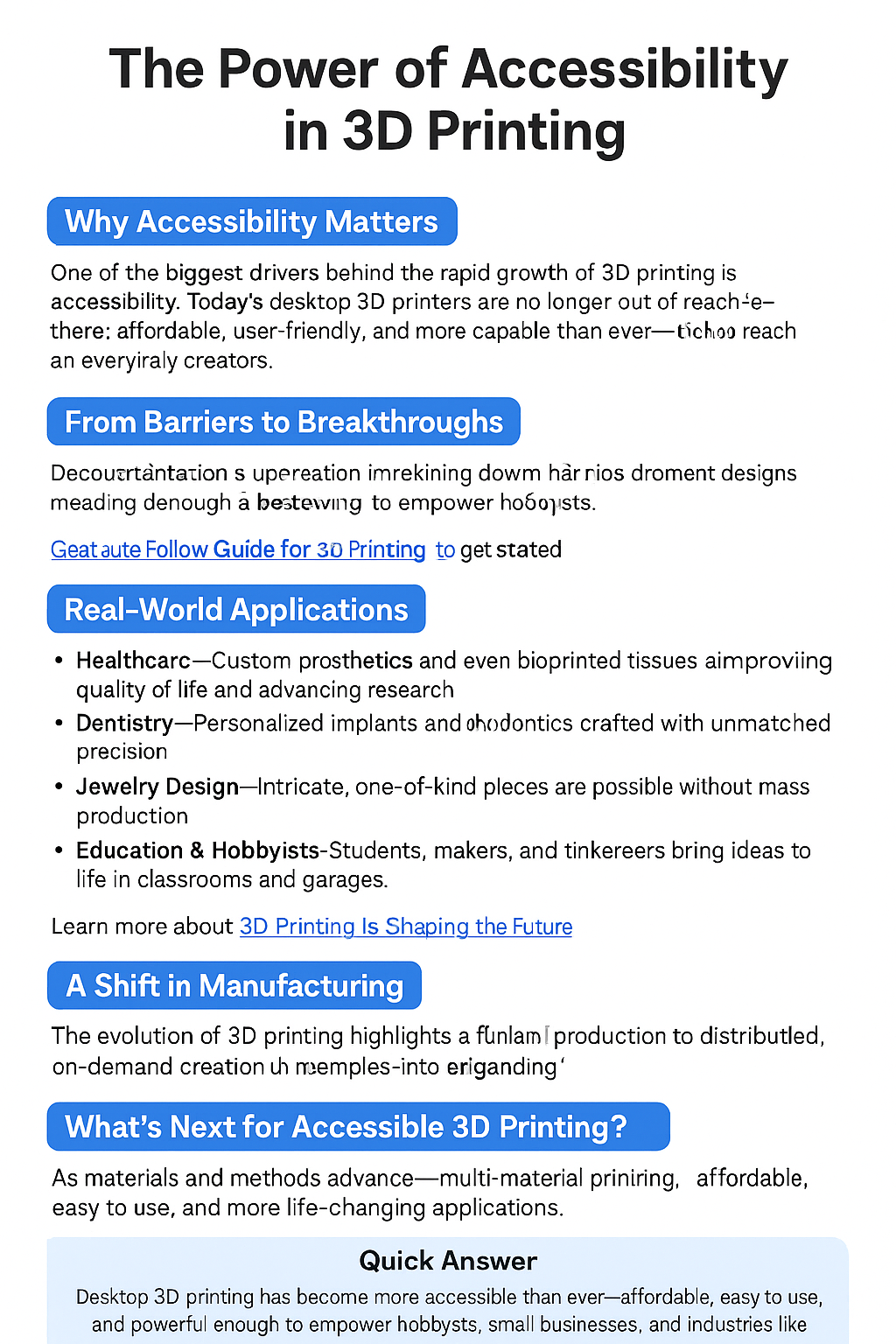Desktop 3D printing has become more accessible than ever—affordable, easy to use, and powerful enough to empower hobbyists, small businesses, and industries like healthcare, dentistry, and education.
Why Accessibility Matters
One of the biggest drivers behind the rapid growth of 3D printing is accessibility. Today’s desktop 3D printers are no longer out of reach—they’re affordable, user-friendly, and more capable than ever. This shift has put advanced manufacturing tools directly into the hands of everyday creators, not just industrial specialists.
From Barriers to Breakthroughs
The days when 3D printing was confined to labs with steep costs and complex operations are gone. Now, intuitive interfaces, competitive pricing, and smarter designs mean that anyone—from hobbyists to small businesses—can design, prototype, and produce with efficiency.
This democratization of creation is breaking down barriers and fostering innovation at a pace we’ve never seen before. If you’re new to the process, check out our Easy-to-Follow Beginner’s Guide to 3D Printing to get started quickly.
Real-World Applications
The accessibility of 3D printing is already transforming industries:
- Healthcare – Custom prosthetics and even bioprinted tissues are improving quality of life and advancing research.
- Dentistry – Personalized implants and orthodontics are crafted with unmatched precision.
- Jewelry Design – Intricate, one-of-a-kind pieces are possible without mass production.
- Education & Hobbyists – Students, makers, and tinkerers can now bring their ideas to life in classrooms and garages.
This wide spectrum of applications shows how far the technology has spread and how deeply it’s impacting daily life. Learn more about how 3D Printing Is Shaping the Future.
A Shift in Manufacturing
The evolution of 3D printing highlights a fundamental shift: moving away from centralized, large-scale production toward distributed, on-demand creation. What once required massive factories can now happen at a local scale—or even at home—empowering people to create on their own terms.
Different materials make this shift possible. For example, using ABS offers strength and durability—learn more in our detailed guide on 3D Printing with ABS.
What’s Next for Accessible 3D Printing?
As materials and methods advance—multi-material printing, higher resolution, eco-friendly feedstocks—the future looks even brighter. We’re approaching an era where the line between digital design and physical reality nearly disappears.
The next chapter promises not just faster and cheaper printing, but smarter, more sustainable, and more life-changing applications.

Frequently Asked Questions
Why has 3D printing become more accessible?
Advances in affordability, user-friendly interfaces, and improved reliability have made desktop 3D printers easier for beginners, hobbyists, and small businesses to adopt.
What industries benefit most from accessible 3D printing?
Healthcare, dentistry, jewelry design, education, and manufacturing are leading sectors using 3D printing for innovation and efficiency.
How does 3D printing change traditional manufacturing?
Instead of centralized, large-scale production, 3D printing enables distributed, on-demand creation, reducing costs and empowering individual creators.
What’s next for accessible 3D printing?
Future advancements include multi-material printing, higher resolution capabilities, and sustainable materials, leading to smarter and more transformative applications.

